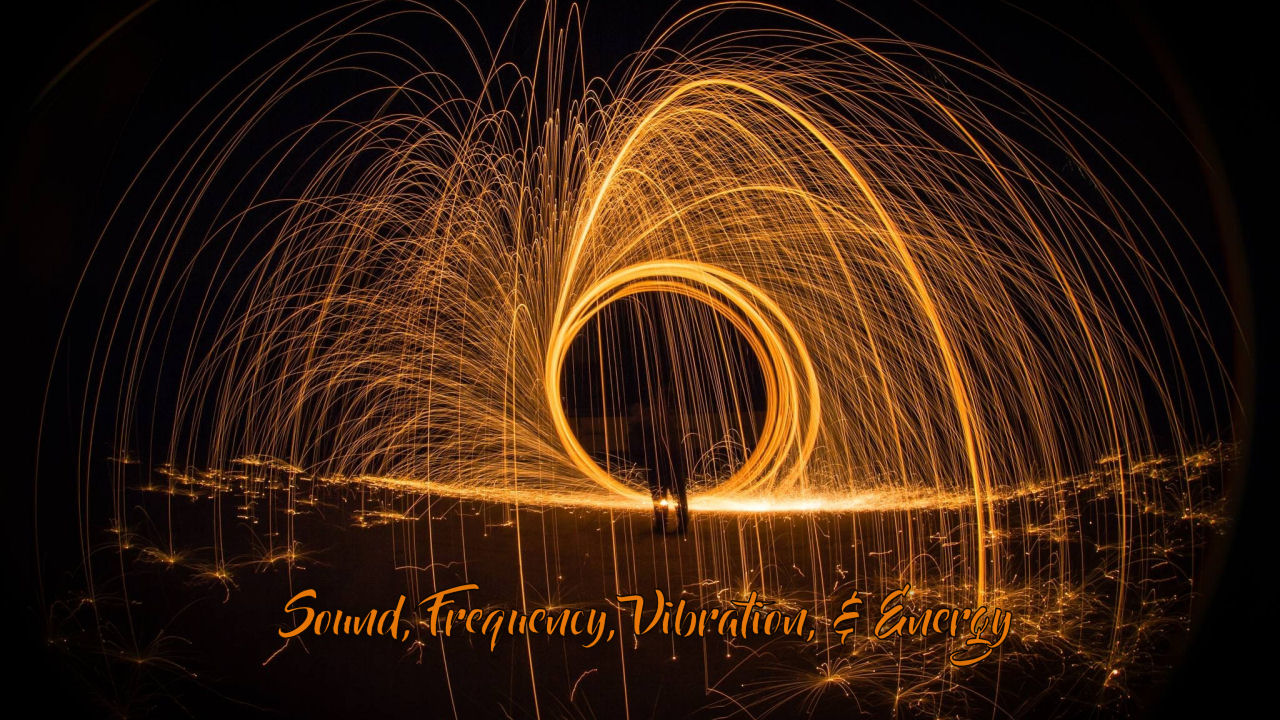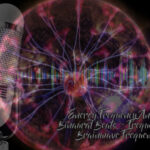In this post, I’ll go over how Sound Frequency Vibration transforms into a variety of energy forms that allow exchanges to happen in nature and within the body. Sound, Frequency, Vibrations, and a concluding summary will be handled independently.
What Is Sound And How Is It Produced?
Sound is a type of energy that travels through the air, or any other medium, as a vibration of pressure waves. The human ear can detect sound waves that vibrate between 20 and 20,000 times per second.
Sound is produced when something vibrates. The vibrations cause the air molecules around the object to vibrate too. These vibrations travel through the air until they reach your ear, where they cause your eardrum to vibrate. This vibration is transferred to tiny bones in your middle ear, which then passes the signal on to your brain. Solfeggio Frequency can help you experience inner peace and harmony.
What Is Sound In Physics?
In physics, sound is a vibration that propagates as an acoustic wave, through a transmission medium such as air or water. Longitudinal waves are produced by vibrating sources that move back and forth along the same line, like a guitar string or tuning fork. The vibrations cause compressions and rarefactions in the medium through which they travel. In solids, compression waves are also called longitudinal waves, while transverse waves (shear waves) involve vibrational motion perpendicular to the direction of propagation of the wave.
How Is Sound Produced?
Most sounds are produced by something vibrating. The noise made when you blow across the top of an empty soda bottle is caused by your lips vibrating. When you speak, your vocal cords vibrate to produce sound. The strings of a guitar or violin vibrate as you play them. Even something as big as a drum can be set into vibration by hitting it with a stick.
All these different objects have one thing in common: they’re all elastic. This means that when they’re hit, they bounce back to their original shape. When an object is hit, it sets off a chain reaction of molecules bumping into each other and passing on the energy of the original collision. This energy travels through the object until it reaches the surface. The vibrations cause the air molecules around the object to start moving too.
The molecules bump into the ones next to them and pass on their extra energy. These molecules bump into more molecules, and so on, until the sound waves travel through the air and eventually reach your ear.
When the sound waves hit your eardrum, they cause it to vibrate. This vibration is transferred to three tiny bones in your middle ear. These bones are called the hammer, anvil and stirrup because of their shape. The stirrup attaches to your inner ear, where it causes fluid in a coiled tube called the cochlea to ripple. This rippling fluid produces nerve impulses that are sent to your brain. Your brain then decodes these signals and you perceive them as sound.
What Is The Speed Of Sound In Mph?
The speed of sound is how quickly the vibrations from a sound wave travel through a medium like air. The speed of sound is about 340 meters per second in air. It’s faster in water (about 1,500 meters per second) and slower in solids (like wood, about 3,000 meters per second).
What Is Db In Sound?
The decibel (dB) is a unit used to measure the loudness of sound. The higher the dB level, the louder the sound. Normal conversation is about 60 dB. A lawnmower is about 90 dB. A rock concert or a jet engine can be about 120 dB.
Energy And Sound
Energy and sound are two important concepts in physics. Energy is the ability to do work, while the sound is a type of energy that travels through the air. Both energy and sound have many uses in our world today.
Energy can be converted into various forms, such as light, heat, or motion. It can be used to power machines, like cars and trains. Sound energy can be used to communicate messages through the air. It can also be used to create music or other noises.
What are the Four Parts of a Sound Wave?
The four parts of a sound wave consisting of Wavelength, Period, Amplitude, and Frequency.
- Wavelength: Consider a wave moving along a horizontal axis; the wavelength is defined as the length of this horizontal space between two successive and identical points on the wave. In other words, one wavelength is one cycle between the two equal points.
- Period: The time it takes for a single wavelength to pass a given area is referred to as the wavelength period. A longer duration generally indicates a lower pitch.
- Amplitude: The amplitude of the sound is determined by the peak of the sound wave (strength or volume of sound pressure). It’s related to the comparison in loudness. When a loud noise makes a large wave, as in “HMA!” A lesser wave has a smaller amplitude. Larger waves are produced by louder sounds.
- Frequency: Hertz (Hz) is a unit that measures the frequency of a sound wave. The cycles per second that pass through a given point on the horizontal axis are determined by hertz. The frequency of sound waves is measured in hertz. As a result, Hz indicates the number of cycles per second that go past a certain location.
What Is The Meaning Of Frequency?
The word frequency has a number of different meanings, all related to the concept of rate or repetition. In general, frequency refers to the number of times something occurs over a given period of time. This can be expressed as a simple count, such as the number of days that it rains in a year, or as a rate, such as the number of times per minute that your heart beats.
When used in the context of waves and wave properties, frequency has a very specific meaning. The frequency of a wave is the number of times per second that the wave repeats itself. This is also known as the wave’s frequency (f). The unit for measuring frequency is hertz (Hz), which is equal to one cycle per second.
So, a wave with a frequency of 1 Hz would repeat itself once per second. A wave with a frequency of 10 Hz would repeat itself 10 times per second. And so on.
The frequency of a wave is related to its wavelength (λ). The higher the frequency, the shorter the wavelength. Conversely, the lower the frequency, the longer the wavelength. This relationship is known as wave dispersion.
What are the Two Types of Wave Dispersion (Frequency)?
The two types of wave dispersion is Normal Dispersion and Anomalous Dispersion.
- In normal dispersion, the speed of waves decreases as their frequency increases.
- In anomalous dispersion, the opposite is true – the speed of waves actually increases as their frequency increases.
The study of wave dispersion is important in the fields of optics and telecommunications, as it helps to determine the best way to transmit information using light or other electromagnetic waves.
So, in summary, frequency is a measure of how often something happens. In the context of waves, it is a measure of how often a wave repeats itself. And finally, frequency is related to wavelength – the higher the frequency, the shorter the wavelength.
What Is C Band Frequency?
C band frequency is the name given to a range of frequencies in the electromagnetic spectrum. These frequencies are used for various types of communications, including television and radio broadcasting, satellite communications, and radar. The C band gets its name from the fact that it was originally allocated for use in the 4 to 8 GHz range of frequencies.
What Is Mhz Frequency?
Mhz frequency is a measure of the number of oscillations or cycles per second that occur in an electromagnetic wave. The higher the frequency, the more oscillations there are and the faster the wave travels. Mhz stands for megahertz and is a unit of measurement used to express frequency. One megahertz is equal to one million hertz.
What Is Resonant Frequency?
The resonant frequency is the natural vibrational rate of an object and is usually denoted by the letter f. It is determined by the object’s mass and stiffness, and also affects the object’s size and shape. When an object is forced to vibrate at its resonant frequency, it will vibrate with greater amplitude than if it is forced to vibrate at a different frequency. Resonant frequencies occur when the driving force applied to an object is in phase with the object’s natural vibration. This can occur when the object is struck, plucked, or otherwise disturbed.
Energy And Frequency
Frequency is a measure of the number of waves of energy that pass a given point in a given amount of time. The higher the frequency, the more waves that pass the point in a given amount of time. Frequency is measured in units of Hertz (Hz). One Hz equals one wave passing a given point per second.
The frequency of a wave is related to its energy. The higher the frequency, the more energetic the wave. High-frequency waves have more energy than low-frequency waves. This is why radio waves can carry so much information: they have a very high frequency and thus can carry a lot of data. The lower the frequency, the less energetic the wave. This is why infrared light, which has a lower frequency than visible light, is not as bright: it doesn’t have as much energy.
What Is Vibration Definition?
In physics, vibration is an oscillation of an object around a central point. The object can be solids, liquids, gases, or plasmas. Vibrations are often periodic, meaning they repeat themselves over time. The study of vibration is called mechanical engineering. Vibrations can be caused by many things, such as sound waves, electrical impulses, and even movement.
The entire world is in a state of vibration, though people seldom perceive this movement-except, perhaps, in dramatic situations such as earthquakes, when the vibrations of plates beneath Earth’s surface become too forceful to ignore. All matter vibrates at the molecular level, and every object possesses what is called a natural frequency, which depends on its size, shape, and composition. This explains how a singer can shatter a glass by hitting a certain note, which does not happen because the singer’s voice has reached a particularly high pitch; rather, it is a matter of attaining the natural frequency of the glass. As a result, all the energy in the sound of the singer’s voice is transferred to the glass, and it shatters.
What Are The Types Of Vibration?
There are Two Main Types of Vibrations: Free and Forced.
- Free vibrations occur when there is no external force acting on the object.
- Forced vibrations happen when there is an external force, such as wind or an earthquake.
Vibrations can have both positive and negative effects. For example, earthquakes can cause buildings to collapse but they also help us study the Earth’s interior. Vibrations are also used in many technologies, such as cell phones, speakers, and electric shavers.
What Is Vibration In Sound?
Sound is produced when a vibrating object sets up longitudinal waves in the air. The vibration causes pressure changes that propagate through the medium as sound waves. The study of vibration is known as vibrology.
Vibration is a periodic motion of the particles of a medium, such as air or water, or of an elastic body, such as a rod or membrane, relative to the medium’s equilibrium position. The oscillations may be regular, such as those produced by a tuning fork, or irregular, such as those resulting from the random shaking of a container of powder.
When sound waves travel through a medium, they cause the particles of that medium to vibrate. The amplitude of the wave determines how loud the sound is. The frequency of the wave determines the pitch of the sound.
Vibration is necessary for sound to exist, but not all vibration produces sound. For example, ultrasonic waves, which have a frequency above the range of human hearing, can cause vibration in a medium but are not perceived as sound.
What Is Resonant Vibration?
Resonant vibration is a type of mechanical vibration in which the system naturally oscillates at one or more specific frequencies. The resonant frequencies are determined by the physical parameters of the system, such as mass, stiffness, and damping. When a system is exposed to an external force at one of its resonant frequencies, the amplitude of the resulting vibration will be large. This can lead to problems such as noise and vibrations which can be damaging to both the system and any surrounding structures.
Sound, Frequency, and Vibration = Energy
Everything in the Universe is made up of energy. This includes our thoughts, feelings, emotions, and physical matter. Our bodies are composed of atoms and molecules that are in constant motion, vibrating at different frequencies. These frequencies can be measured and are what give things their unique properties, such as color, sound, and smell. Everything has its own unique frequency signature.
Our thoughts and emotions also have frequencies. Negative thoughts and emotions have lower frequencies than positive ones. When we feel happy or loved our frequency rises. Anger, fear, and hatred vibrate at a lower frequency. Even Einstein proved that everything is energy with his famous equation E=mc². Stating that all matter vibrates, so the exchange of energy from matter to energy is simply a change in vibration.
Three ways Energy is Transferred
- First, energy is transferred through the medium of sound (via the air). The sound waves travel through the air and cause the molecules to vibrate. This vibration then transfers the energy to the frequency, which amplifies it. The amplified signal then causes the vibrations to become more intense, resulting in an exchange of energy between the three elements.
- The second way, suggests that the exchange of energy occurs when the sound waves interact with the objects in their environment. When the sound waves hit an object, they cause it to vibrate. This vibration then transfers the energy to the frequency, which amplifies it. The amplified signal then causes the vibrations to become more intense, resulting in an exchange of energy between the three elements.
- Lastly, the exchange of energy is due to the resonance between the sound and the object. When the sound waves hit an object, they cause it to vibrate. This vibration then transfers the energy to the frequency, which amplifies it. The amplified signal then causes the vibrations to become more intense, resulting in an exchange of energy between the three elements.
Sound Vibrations And Healing
There is a growing body of evidence that suggests that sound vibrations can have a positive effect on our physical and mental health. Studies have shown that sound therapy can help to reduce stress, anxiety, and pain levels, as well as improve sleep quality and cognitive function.
One of the most well-known examples of sound therapy is music therapy. Music therapy is an evidence-based clinical use of music interventions to accomplish individualized goals within a therapeutic relationship. Music therapists use both active and passive music experiences to help clients achieve their goals. Active music experiences include playing instruments, singing, songwriting, and moving to music. Passive music experiences involve listening to recorded or live music.
Types Of Sound Energy
There are three types of Sound Energy (Energy exchange): kinetic, potential, and thermal. The exchange happens simultaneously
- Kinetic exchange happens when a compression wave travels through a medium. The particles of the medium are pushed together and then pulled apart. This causes them to vibrate. The amount of energy that is exchanged depends on the amplitude of the wave. The higher the amplitude, the more energy is exchanged.
- Potential exchange happens when a rarefaction wave travels through a medium. The particles of the medium are pulled apart and then pushed together. This causes a change in the pressure of the medium. The amount of energy that is exchanged depends on the wavelength of the wave. The longer the wavelength, the more energy that is exchanged.
- Thermal exchange happens when heat is transferred between the particles of a medium. The amount of energy that is exchanged depends on the temperature of the particles. The hotter the particles, the more energy is exchanged.


